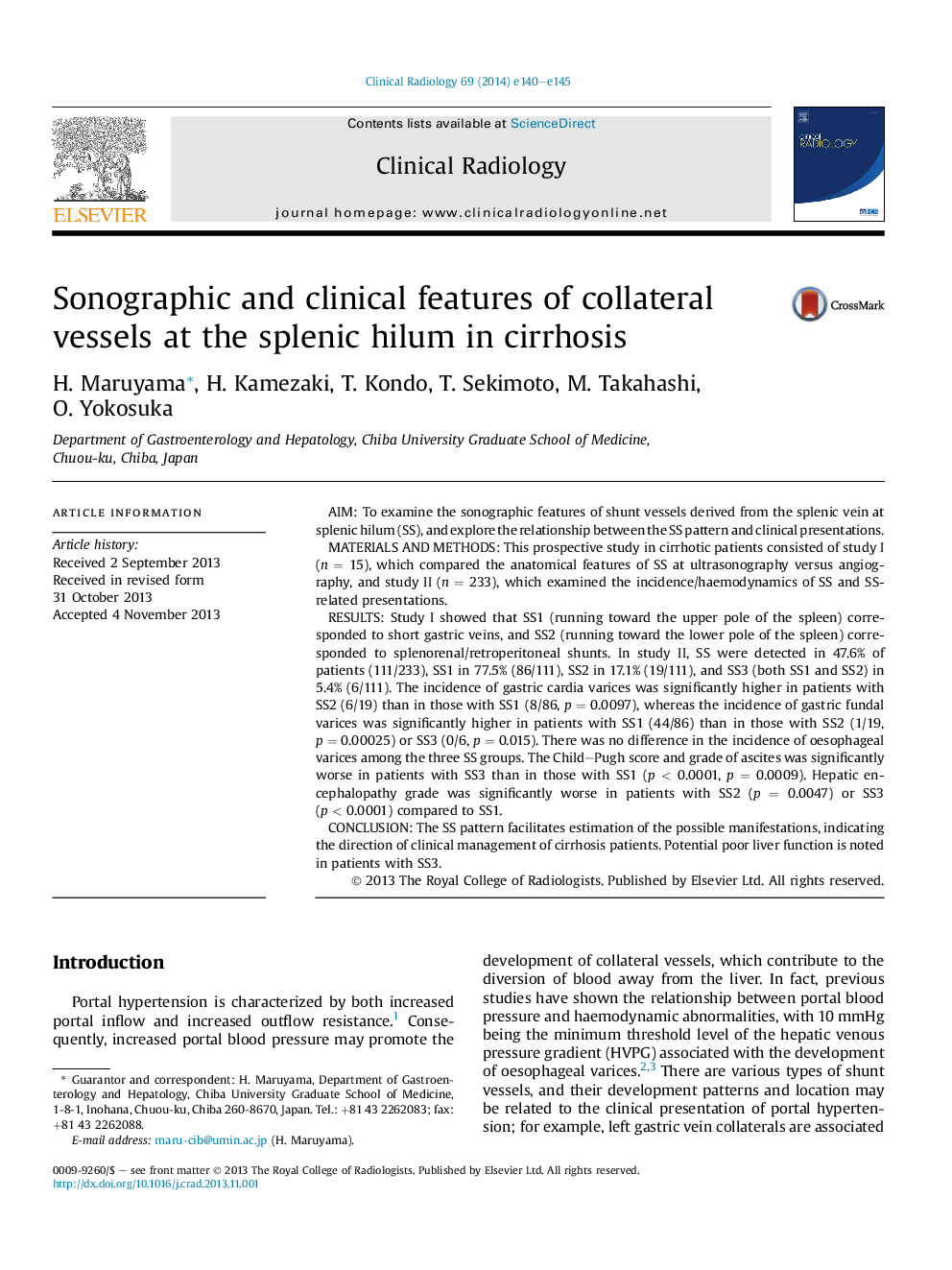| Article ID | Journal | Published Year | Pages | File Type |
|---|---|---|---|---|
| 3982054 | Clinical Radiology | 2014 | 6 Pages |
AimTo examine the sonographic features of shunt vessels derived from the splenic vein at splenic hilum (SS), and explore the relationship between the SS pattern and clinical presentations.Materials and methodsThis prospective study in cirrhotic patients consisted of study I (n = 15), which compared the anatomical features of SS at ultrasonography versus angiography, and study II (n = 233), which examined the incidence/haemodynamics of SS and SS-related presentations.ResultsStudy I showed that SS1 (running toward the upper pole of the spleen) corresponded to short gastric veins, and SS2 (running toward the lower pole of the spleen) corresponded to splenorenal/retroperitoneal shunts. In study II, SS were detected in 47.6% of patients (111/233), SS1 in 77.5% (86/111), SS2 in 17.1% (19/111), and SS3 (both SS1 and SS2) in 5.4% (6/111). The incidence of gastric cardia varices was significantly higher in patients with SS2 (6/19) than in those with SS1 (8/86, p = 0.0097), whereas the incidence of gastric fundal varices was significantly higher in patients with SS1 (44/86) than in those with SS2 (1/19, p = 0.00025) or SS3 (0/6, p = 0.015). There was no difference in the incidence of oesophageal varices among the three SS groups. The Child–Pugh score and grade of ascites was significantly worse in patients with SS3 than in those with SS1 (p < 0.0001, p = 0.0009). Hepatic encephalopathy grade was significantly worse in patients with SS2 (p = 0.0047) or SS3 (p < 0.0001) compared to SS1.ConclusionThe SS pattern facilitates estimation of the possible manifestations, indicating the direction of clinical management of cirrhosis patients. Potential poor liver function is noted in patients with SS3.
